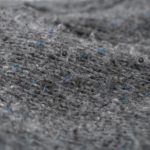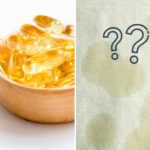You’ve just enjoyed a cozy evening by the fireplace, the soothing warmth of the crackling logs and the gentle dance of flames creating a perfect atmosphere.
However, as you lean back on your favourite armchair, you glance down and notice an unwelcome guest – soot stains on your beloved jumper.
Soot stains on clothing can be a nuisance, but we’ve got your back.
In this guide, we’ll be sharing tips and tricks on using vinegar and bicarbonate of soda to rescue your garments and keep them looking their best.
So, let’s roll up our sleeves and get those clothes back in tip-top shape.
Why Soot Is Difficult to Remove from Clothes

Soot can be particularly challenging to remove from clothing due to a few factors.
It’s composed of extremely fine particles, often smaller than the eye can see. These particles can easily work their way into the fibres of fabric, making them difficult to dislodge.
Soot particles also have adhesive qualities, which means they tend to cling to surfaces, including fabric, with tenacity. This adhesive nature makes them resistant to simple wiping or brushing.
Being primarily composed of carbon, soot can penetrate deep into the fabric, making it tough to extract them completely.
Depending on its source, the soot can vary in chemical composition. Soot can contain oils or greases that can further complicate stain removal. These substances can bind with the fabric, making the stain even more stubborn.
If exposed to heat or pressure, as can happen during ironing or high-temperature machine drying, soot stains can set into the fabric. Once set, they become more challenging to remove.
What You’ll Need
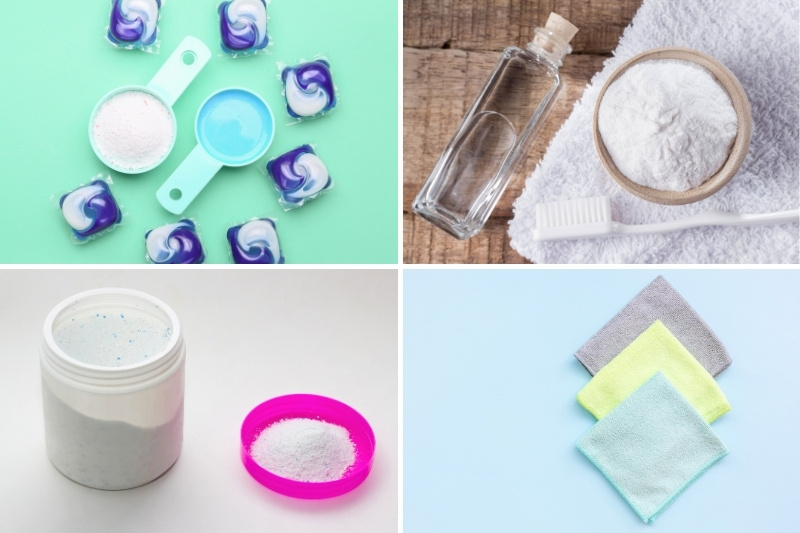
- Laundry detergent: Choose a heavy-duty laundry detergent suitable for the fabric type of the stained garment.
- White vinegar: White vinegar is a versatile and effective cleaning agent. It helps break down soot stains and neutralises odours. Ensure you have a bottle of this household staple on hand.
- Bicarbonate of soda: Bicarbonate of soda is another trusted ally in the battle against soot stains. It’s excellent for absorbing odours and can be used to create a paste for stain removal.
- Soft-bristle brush: A soft-bristle brush, such as an old toothbrush or a dedicated stain-removing brush, will aid in gently scrubbing away soot particles without harming the fabric.
- Clean cloth or paper towels: Keep a clean cloth or paper towels handy to blot and absorb excess soot before starting the cleaning process.
- Stain pre-treatment products: While not essential, there are commercial stain pre-treatment products available in the market that can be effective for stubborn soot stains. These products can be used as an alternative to homemade solutions.
Preparing for Stain Removal
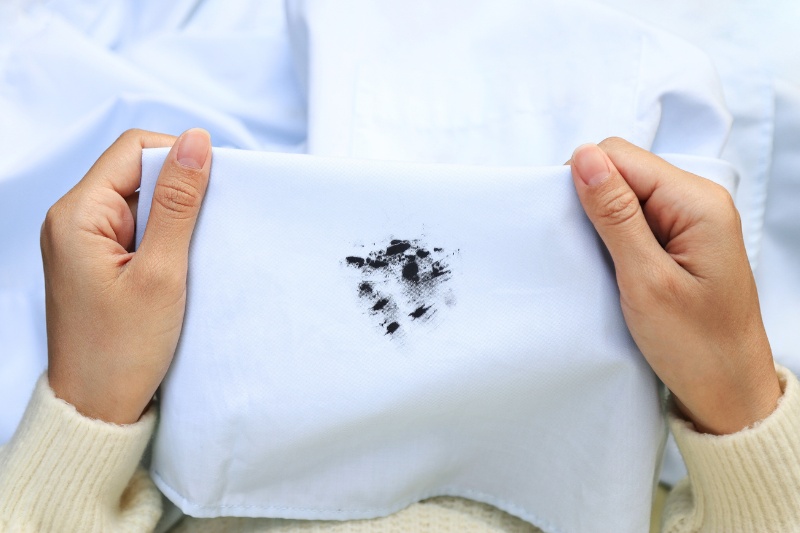
Before diving into the stain removal process, it’s important to make some necessary preparations to ensure a successful outcome. Here’s a step-by-step guide to getting ready:
Safety precautions
If you’re dealing with soot stains from a fireplace or stove, ensure the area is well-ventilated. Proper ventilation helps dissipate any lingering soot particles in the air and prevents inhalation.
To protect your hands from potential irritants and to maintain hygiene, we advise you to wear disposable or reusable gloves throughout the stain removal process.
Check the garment’s fabric type
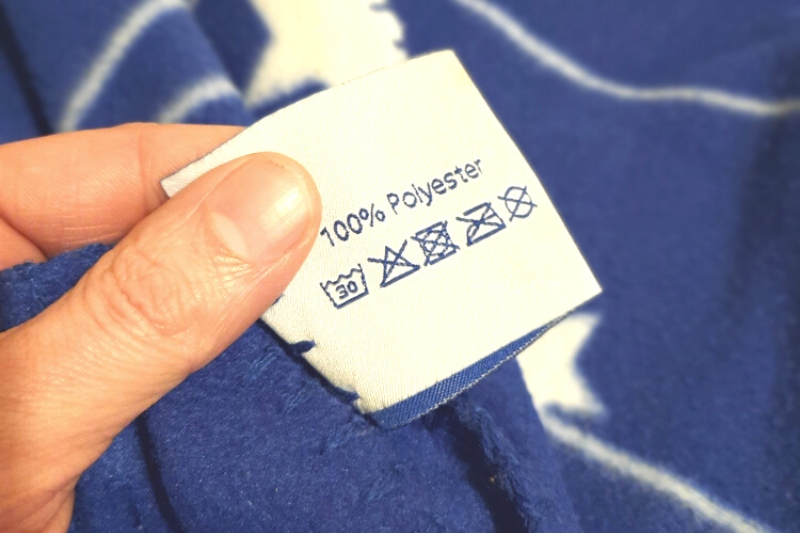
Different fabrics require different approaches when dealing with soot stains. Before proceeding, identify the type of fabric your garment is made from.
Common fabric types include cotton, linen, wool, silk, synthetic blends, leather, and suede. Knowing your fabric will help you choose the most suitable cleaning method.
We’ve included a specific section on these fabric types later on in the article.
Test a hidden area
If you’re unsure how the fabric will react to the stain removal process, it’s wise to perform a spot test on an inconspicuous area of the garment. This allows you to check for any adverse effects, such as colour fading or fabric damage, before treating the visible stain.
How to Remove Soot from Clothes
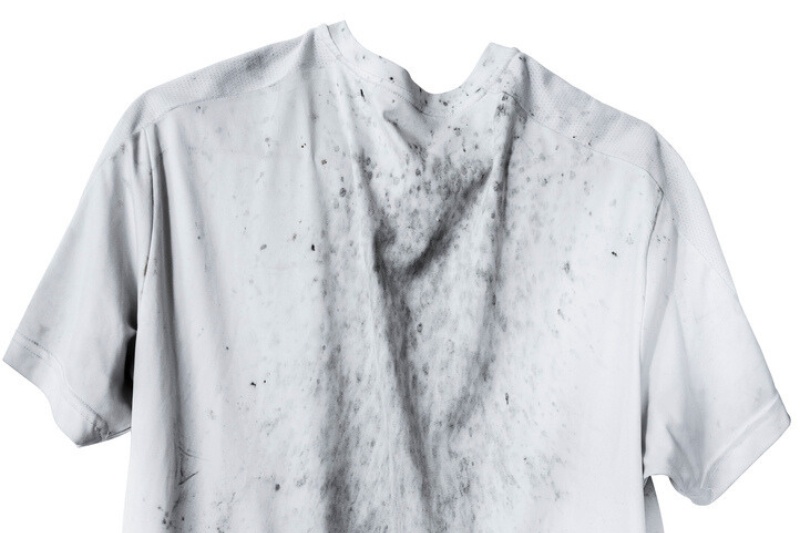
1. Brush off loose soot particles
Use a soft-bristle brush or an old toothbrush to gently remove any loose soot particles from the stained area. Be careful not to rub the stain further into the fabric.
You may find that some of soot may come out if you give the garment a good shake. We recommend you do this outside, mostly so you don’t inhale the soot particles, but also to prevent you from redecorating your furniture in a layer of soot.
2. Blot and scrape off soot
Begin by gently blotting the stained area with a clean cloth or paper towels to soak up any loose soot particles. Avoid rubbing, as this can push the soot deeper into the fabric.
If the soot is thick or clumpy, you can use a blunt edge, like a spoon, to carefully scrape off the excess. Be gentle to prevent fabric damage.
Consider rinsing the stain under the cold tap. We recommend you flip your clothing item inside out and rinse the water through the stain from behind.
3. Apply white vinegar
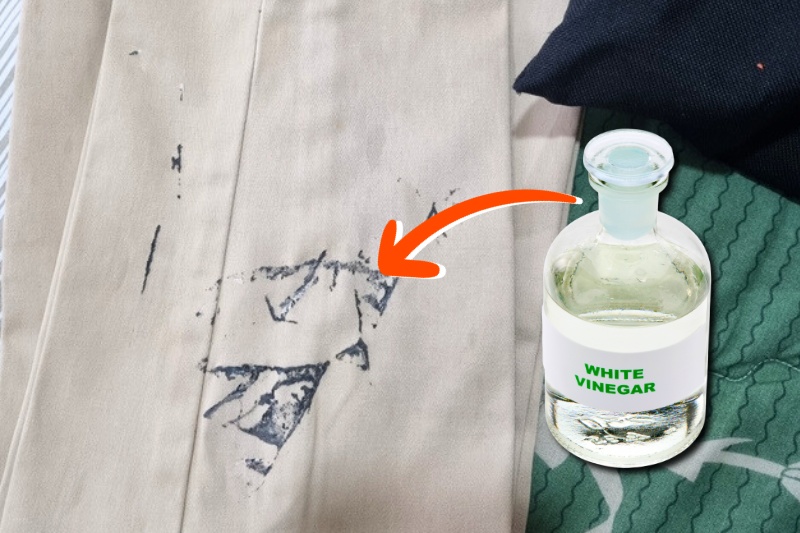
Mix one part white vinegar with two parts cold water to create a vinegar solution.
Dab a small amount of the vinegar solution onto the stained area using a clean cloth or sponge. Blot, don’t rub, to avoid spreading the stain.
Allow the vinegar solution to sit on the stain for 5-10 minutes. Vinegar is effective at breaking down soot particles and helping to lift the stain.
4. Apply a bicarbonate of soda paste
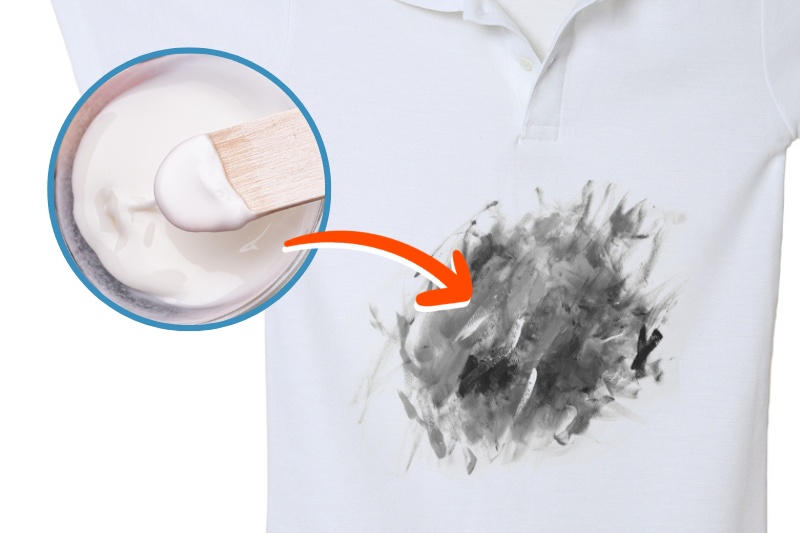
Create a paste by mixing bicarbonate of soda with a small amount of cold water. The paste should be thick enough to adhere to the stain without being runny.
Apply the bicarbonate of soda paste directly onto the stained area, ensuring it covers the entire stain.
Gently rub the paste into the stain using a soft-bristle brush. Make small, circular motions without applying excessive pressure.
Allow the bicarbonate of soda paste to sit on the stain for approximately 15-20 minutes. This gives it time to absorb and loosen the soot.
Bicarbonate of soda is a natural deodoriser, so this step should also help remove some of the odour.
5. Rinse with cold water
Thoroughly rinse the treated area with cold water. Continue rinsing until the water runs clear, and you no longer see any traces of vinegar or bicarbonate of soda.
If the stain remains visible after the initial treatment, you may need to repeat the vinegar and bicarbonate of soda steps. Patience is key when dealing with stubborn stains.
6. Wash the garment
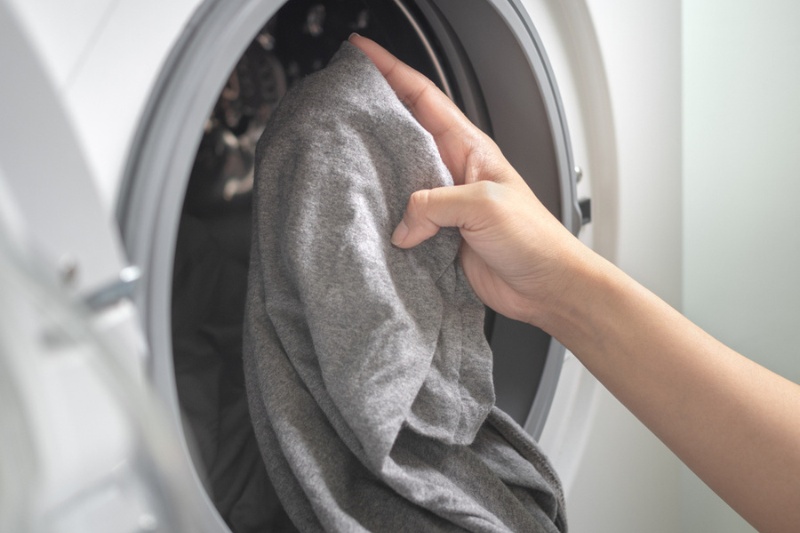
Check the garment’s care label for washing instructions, and ensure you follow them.
Wash using a heavy-duty laundry detergent, and if the fabric allows for it, use half a cup of oxygen-based bleach.
Use a water temperature appropriate for the garment. If you’re unsure, have a look at the care label.
Remember that different fabric types may require slight variations in the process, so always consider your garment’s specific needs.
7. Air dry

After washing, inspect the stain once more before allowing the garment to air dry. Heat from a dryer can also set stains, so air drying is the safest option until you’re certain the stain is fully gone.
Although it is unlikely that any odour will remain, air drying will be the final step in naturally removing any lingering smells.
Additional Tips for Specific Fabrics
Different fabrics require tailored care when dealing with soot stains. Here are some specific tips for handling various types of fabrics:
Cotton and linen
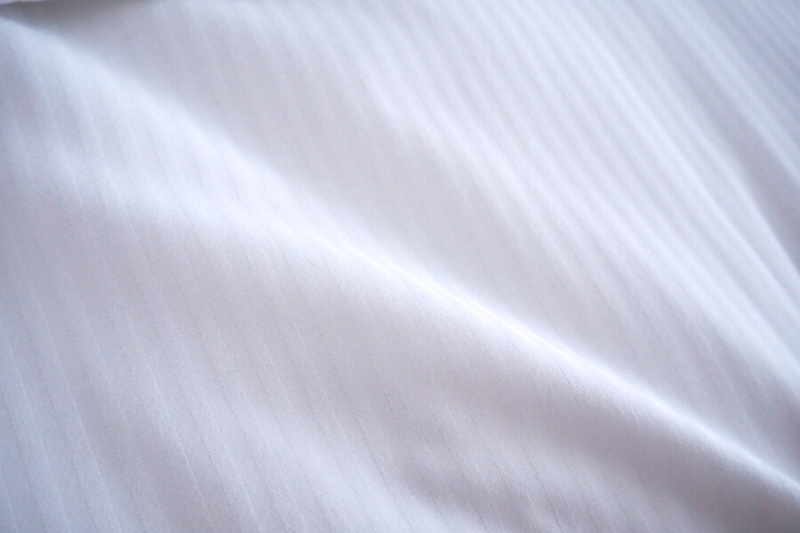
Cotton and linen are generally robust fabrics. You can follow the standard stain removal process outlined earlier.
For white cotton or linen items, you may also consider using a diluted hydrogen peroxide solution (one part hydrogen peroxide to nine parts water) as an alternative to vinegar to help remove stubborn stains.
Test this on a hidden area first, as hydrogen peroxide can bleach fabric.
Wool and silk

Wool and silk are more delicate than cotton and linen, so extra care is needed.
You may find the vinegar odour will cling to the wet wool fibres but this will dissipate as the wool dries.
Consider using a specialised wool or silk laundry detergent if you want to err on the side of caution.
Synthetic fabrics

Synthetic fabrics, like polyester and nylon, are relatively stain-resistant and can tolerate the standard stain removal process.
However, be cautious with heat; avoid hot water and high dryer temperatures as they can damage synthetic materials.
Leather and suede
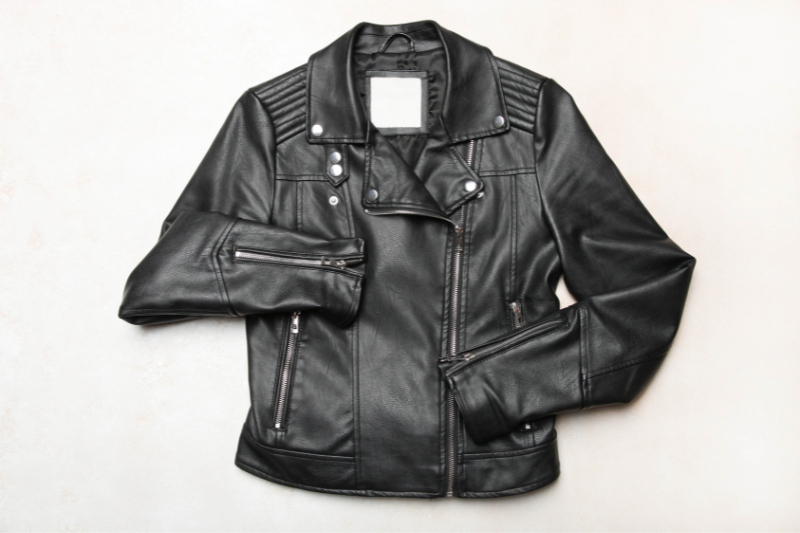
Leather and suede require special treatment for soot stains.
For leather, gently wipe off excess soot with a clean cloth and then use a leather cleaner and conditioner as per the product’s instructions.
For suede, gently brush away excess soot with a suede brush. Do not use water; consult a professional cleaner if the stain persists.
Always check the care label on your clothing for specific recommendations. When in doubt, it’s advisable to seek professional cleaning services for delicate or valuable items, especially if you’re unsure about the best approach for the fabric in question.
Dealing with Stubborn Soot Stains
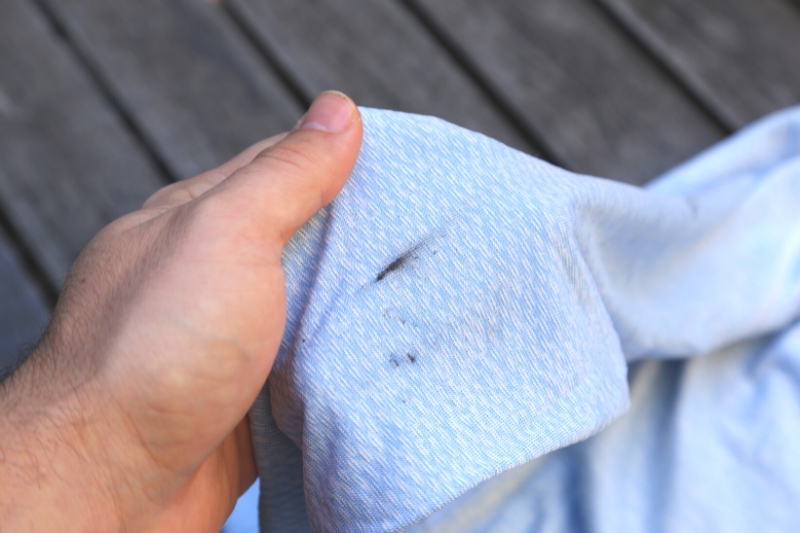
While the previous steps should effectively tackle most soot stains, some particularly stubborn stains may require extra attention and persistence. Here’s how to handle those tenacious marks:
For stubborn soot stains on white or colour-fast fabrics, you can try a diluted hydrogen peroxide solution (one part hydrogen peroxide to nine parts water).
Apply it to the stain, let it sit for a few minutes, and then rinse thoroughly with cold water. Repeat if necessary.
For oily soot stains, such as those caused by a kitchen mishap, pre-treat with a washing up liquid or a stain-removing spray specifically designed for oil-based stains before following the standard stain removal process.
Remember to always exercise patience when dealing with stubborn stains. Rushing or using aggressive methods can cause further damage to your clothing.
Commercial stain removers
Consider using a commercial stain remover specifically designed for soot stains if your initial attempts don’t yield results.
Follow the product’s instructions carefully and test it on an inconspicuous area of the fabric first to check for any adverse reactions.
When to seek professional help
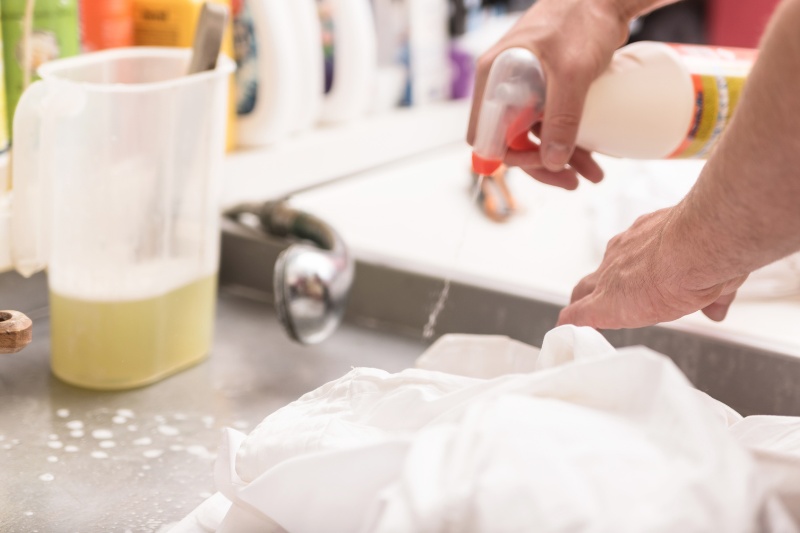
If your efforts to remove the stain have been unsuccessful after multiple attempts, it may be time to consult a professional cleaner.
Be sure to inform the cleaner about the nature of the stain and the fabric type, as this information will guide their treatment.

In The Wash is your guide to the best laundry and cleaning products, tips and tricks. Our mission is to solve the UK’s cleaning and laundry dilemmas!





